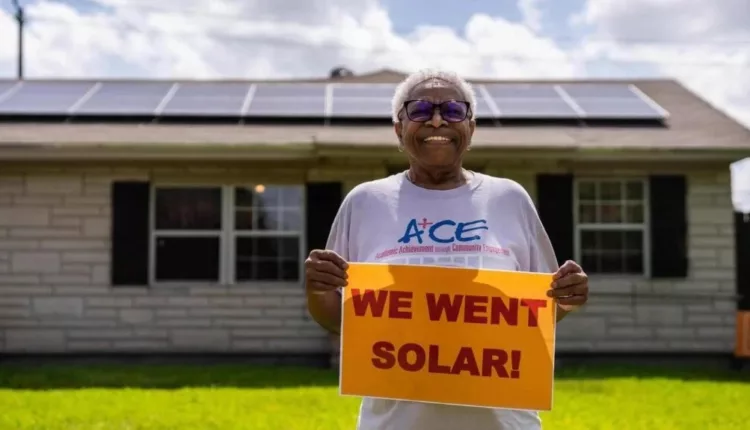
More Underserved Communities Adopting Affordable Solar Energy
TL/DR –
Doris Brown’s solar-powered home in Houston was a refuge during a power outage caused by a lightning storm, demonstrating the advantage of solar power in such situations. A federal initiative under the Inflation Reduction Act, known as Solar for All, includes $7 billion to fund approximately 60 solar projects in disadvantaged neighborhoods across the US, with the goal of providing relief to households that spend a significant portion of their income on energy. These grants will range from $25 million to $400 million, and are anticipated to be awarded in March.
“`html
Power Outages in Houston Remedied by Solar-Powered Homes
After a summer lightning storm caused a power outage in Northeast Houston, a solar-powered home owned by Doris Brown, a 73-year-old community activist, became an unexpected haven for neighbors. The home, which has had solar power since spring, was installed with solar panels by a group of nonprofits. The project aimed to create hub homes capable of providing power to low-income communities during outages, a need exacerbated by the increased frequency and severity of storms due to climate change.
Solar Power Adoption Hindered by Cost in Low-Income Areas
Despite the benefits, solar-powered homes are scarce in lower-income areas due to the high installation cost. However, the Inflation Reduction Act may help change this. The act includes the Solar for All scheme, which allocates $7 billion to fund roughly 60 solar energy projects in disadvantaged neighborhoods nationwide. Many stakeholders, including states, cities, Native American tribes, and environmental nonprofits, have applied for grants under this scheme.
Beneficiaries of the Solar for All Scheme
The Solar for All scheme aims to make solar energy more accessible to communities previously unable to afford it. Solar United Neighbors, a D.C.-based nonprofit, installed the panels on Brown’s home with financial support from the Hive Fund for Climate and Gender Justice. The fund has supported more than 120 grantees mostly in the Southern states.
High Energy Bills for U.S. Households
Based on a 2020 report by the American Council for an Energy-Efficient Economy, U.S. households spend an average of 3.1% of their income on home energy bills. However, a quarter of households pay more than 6%, and 13% pay more than 10%.
High energy costs disproportionately affect Black, Hispanic, Native American, older adult households, and people living in low-income or older buildings. Matt Abele, interim executive director of the North Carolina Sustainable Energy Association, emphasized that many homeowners often have to choose between paying utility bills or supporting their families.
Grant Applications for Solar for All
The Solar for All scheme is set to award grants between $25 million to $100 million for smaller projects and up to $400 million for larger ones. Almost all states have applied for these grants, many through state agencies handling energy and environment issues.
In North Carolina, the State Energy Office leads a $250 million Solar for All grant proposal to expand solar power to over 20,000 low-income and disadvantaged communities. Residents in Greensboro, North Carolina have seen substantial reductions in their energy bills after solar panel installation, with many able to save towards other expenses, such as college funds for their children.
Improved Solar Access in Various States
States including Colorado, Missouri, and New Jersey are seeking $250 million each in grants to increase solar access for disadvantaged residents. Tribal governments like the Kiowa Tribe in Oklahoma aim to reduce energy costs through solar energy for Native American households. Texas has also submitted a $400 million grant application for multiple projects to augment the state’s power grid and provide solar power to disadvantaged neighborhoods.
Despite the high upfront costs of solar energy, many community members, like Doris Brown, testify to the significant savings on electric costs. By providing firsthand evidence of the benefits of solar-powered homes, these individuals contribute to dispelling skepticism and misunderstanding about renewable energy in their communities.
“`
—
Read More US Economic News
